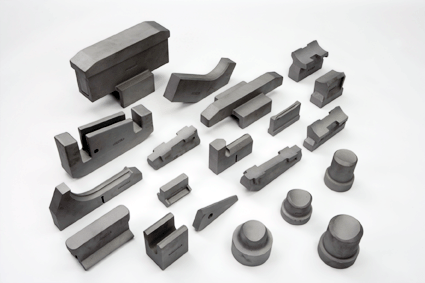What Is High-Pressure Die Casting?
High-pressure die casting is a manufacturing process where molten metal is pushed with a piston into a sealed cavity at high pressure and high speed. The mold is held tight using compression until the metal cools down and solidifies. This process can be used to create anything from a simple heavy-duty fastener to an engine block. The die casting process can turn molten metal into a solid part in mere seconds.
metal into a solid part in mere seconds.
The most common metals used in the high-pressure die casting process are aluminum, zinc, and magnesium, but steel, copper, and lead can also be used.
So, just how do these metals get turned from a liquid state into an object that you use every day? Let’s take a look at the process.
The high-pressure die casting process
The high-pressure die casting process consists of four main steps:
- Preparing the mold. This important first step is key to the finished product. By applying a lubricant to the inside of the mold, the manufacturer regulates the temperature and creates a film between the mold and the molten metal that will be put inside. This allows for easy removal of the casting. After applying the lubricant, the mold is closed and sealed.
- Injection. This is the stage where the manufacturing company actually puts molten metal into the mold. The metal is injected at a pressure somewhere between 1,500 and 25,000 PSI. The die casting mold then maintains this pressure until the metal has solidified.
- Ejection. This step requires the ejection of the solidified metal from the mold. This is done by releasing ejector pins that are a part of the mold.
- Shakeout. The final step of the process is where scrap metal gets separated from the newly made metal object. This is simply the process where the manufacturer cleans out the mold so it can be used again.
High-pressure die casting — hot and cold chamber systems
There are two separate systems that can be used to manufacture an object using high-pressure die casting:
- Hot chamber systems
- Cold chamber systems
While the process outlined above is the same for both systems, there are a few differences between each.
Hot chamber
Metals such as zinc, magnesium and lead require the hot chamber method. These metals have a lower melting point than those used in the cold chamber system. The horizontal injection system used is submerged in molten metal. When the piston is pumped, it forces the metal from the blast furnace into the mold.
It’s the quicker of the two methods, as you don’t have to ladle the metal out of the blast furnace. It also uses less PSI, in the 1,000 – 5,000 PSI range.
Cold chamber
The cold chamber method is used for aluminum, copper, and magnesium, which melt at a higher temperature. Magnesium can be used in both methods. With this system, the molten metal must be ladled into an opening attached to the mold. A piston then pushes the metal into the mold. This process takes longer since the additional step of pouring the metal into the machine is added, but this system can use both a horizontal or vertical injection system.
Advantages of high-pressure die casting
High-pressure die casting has some enormous advantages over other forms of die casting. First, the production time is quicker, as other forms of die casting rely on gravity and not PSI to push the molten metal into the mold.
The object that is cast has a good finish when coming out of the mold. And the molds are extremely durable, reducing the unit cost of your object since new molds rarely need to be made.
High-pressure die casting is a common production method used in the manufacturing of metal components. It offers a broader range of designs than other metal manufacturing processes and can create complex, intricate shapes.


 O.B.T Manufacture
O.B.T Manufacture 

